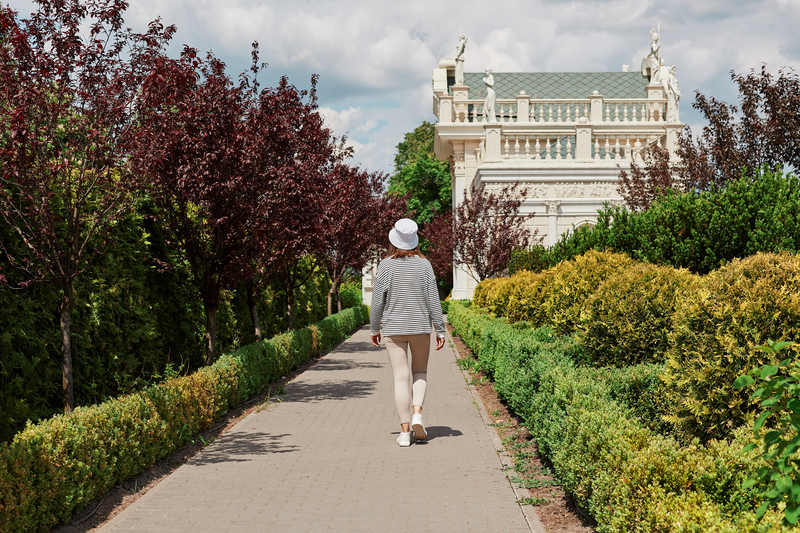Step Back to Move Forward: 8 Surprising Benefits of Backward Walking

Backward walking is not just a way to get extra attention, mix up your workout, or get a different perspective. It’s actually a very good way to improve your health, strengthen your knees, hips, lower back, and leg muscles, and greatly improve your balance and stability. While it may seem a little strange (and awkward) at first, the benefits and potential pain relief you’ll feel will be well worth it.
What Is Backward Walking?
Beyond the obvious, how does backward walking differ from forward walking? It might seem like they would be very similar. However, walking in reverse requires your body to make the exact opposite motions of moving forward.
When walking normally, you roll your foot forward while bending slightly at the knee and lifting your leg to place your heel on the ground in front of you. While this is happening, your opposite leg naturally moves as well, rolling at the toes and then swinging forward to pass your other leg and place your heel on the ground. Your foot propels you forward as you roll through your toes to repeat the motion on the opposite side.
When backward walking, you lift your leg and swing it backward with a bent knee to find the ground with your toes, rolling through to your heel and then straightening your knee before repeating the process.
This reversal of movement puts different stressors on your legs and joints, particularly the knee, allowing you to strengthen these areas differently.
Why Would You Want to Walk in Reverse?
Now you know what backward walking is, but why would you ever want to do such a thing? While many of us are well versed in the multitude of benefits of walking, it turns out that backward walking crushes it in the benefits department, too.
Check out all the benefits of backward walking:
Improves stability—working on your balance is very important, especially as you get older and falls become more dangerous to your health. Backward walking helps improve your balance and helps you feel more stable as you move.
Improves your gait—backward walking can also help improve your gait. Studies show that walking in reverse helps increase your spatial awareness and results in significant differences in how the joints move.
Improve your mobility and range of motion—reverse walking can also help increase your flexibility and your ability to move your body through space. Because there is more focus on the quads and hamstrings and less force on the knee joint, you can increase your range of motion.
Supports stronger knees—if your knees are achy, arthritic, or just plain hurt, walking in reverse may alleviate some of the pain and pressure normally experienced when walking in a normal forward motion. Because you’re walking backward, the heel is not the first thing to touch the ground. (Your toes are.) This means less pressure on your knee joint.
Ease lower back pain—sometimes it’s your knees that hurt, and sometimes that pain travels to other areas of your body. This is known as “referred pain,” and it may also be relieved by walking in reverse.
Allows you to use muscles differently—instead of the same-old, same-old use of muscles with forward walking, backward walking will change it up and challenge your muscles in new ways.
Get stronger—and because you’re using your muscles in new and different ways, they will get stronger as they learn the new movements.
Burn more calories—it’s true! According to the American College of Sports Medicine, walking forward at a pace of 3.5 mph burns 4.3 of the amount of calories as when the body is at rest (METS). Yet, backward walking burns 6 times as many calories. That’s quite a boost!
Ready to Start Backward Walking? Here’s How to Do So Safely
Once you’re committed to trying this newfangled way of walking, you must do it safely. Without precautions, this type of walking can be dangerous if you’re not balanced or run into an obstacle that causes you to fall and injure yourself.
First, try walking backward on a flat, stable area (like in a long hallway, at a track or walkway, or across an unoccupied sports field).
Once you have mastered walking backward and feel comfortable doing so, you may want to try walking backward on a treadmill. Choose a treadmill with sturdy handles and variable speed and incline.
Start slowly—and by starting slowly, that means moving at a ridiculously slow pace until you get used to the backward movement. Give yourself grace as your body learns the new movement patterns, your balance improves, and your muscles strengthen. Ramp up to longer distances or faster speeds slowly as you get more comfortable. (Though you’ll always walk more slowly backward than you do forward.)
If on a treadmill, hold onto the handles—this is important! Because this type of movement is likely new and unusual for you, it’s very important that you hold onto the handles to keep yourself steady and straight.
Use a buddy system—you may want to have someone turn on the treadmill for you and increase the speed since you won’t be facing forward. It’s also handy to have someone there to shut it off when you’re done.
Use the safety lanyard—attach this to your clothing so the machine will shut off automatically if you misstep or take a tumble.
Work your way up to tougher workouts over time—this is not a workout where you will set speed or strength records. The idea is to get the benefits of gentle strengthening, better mobility and balance, rehabbing of knees, and easing back pain with continued practice.
Also, good to try: backward pedaling motion on the elliptical, backward sled drags, and even backward walking on a slight incline.
Start with just a few minutes and work your way up to 5- to 10-minute sessions 2 to 3 times a week. You’ll soon find backward walking helps you make huge strides forward in your health.






